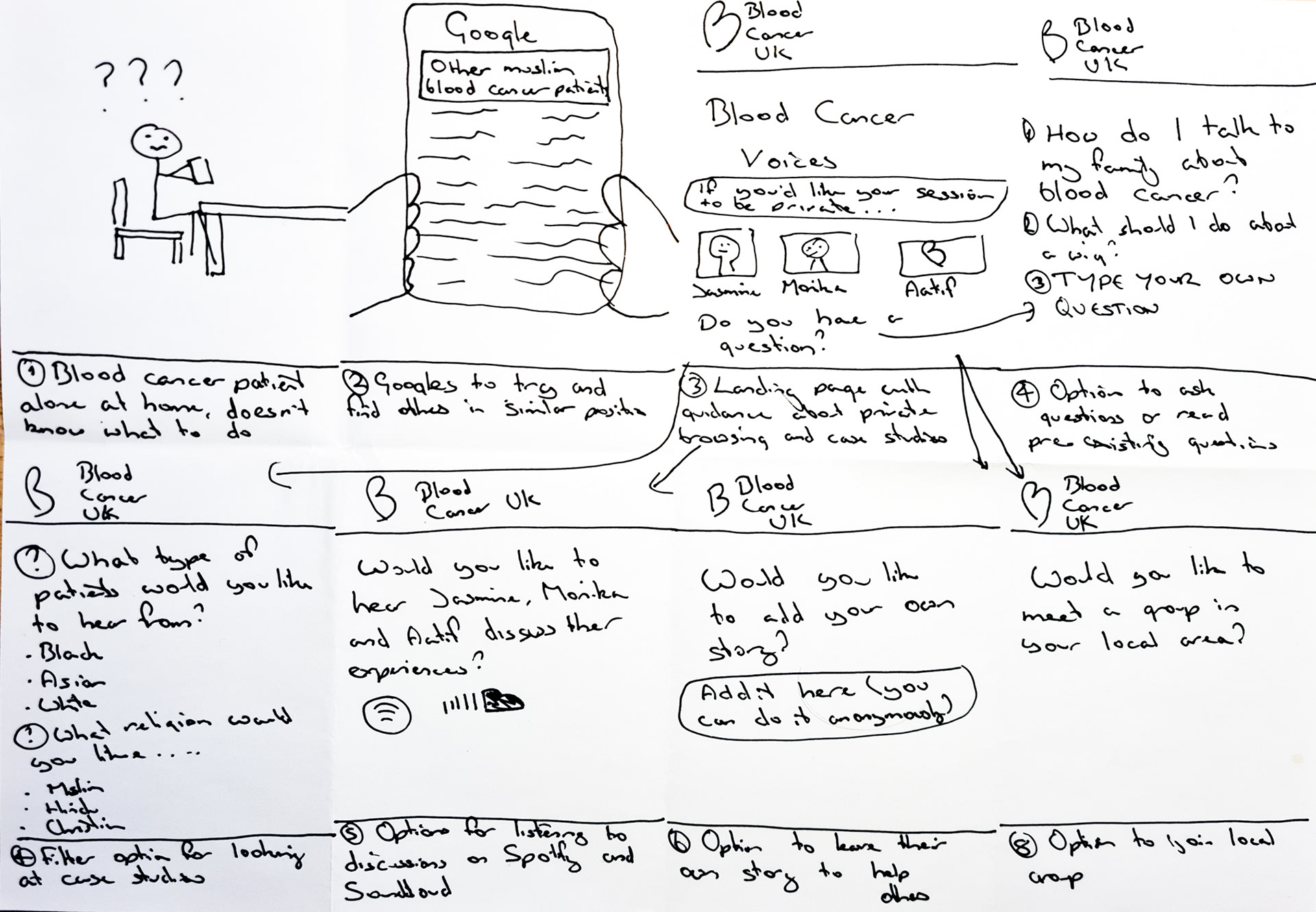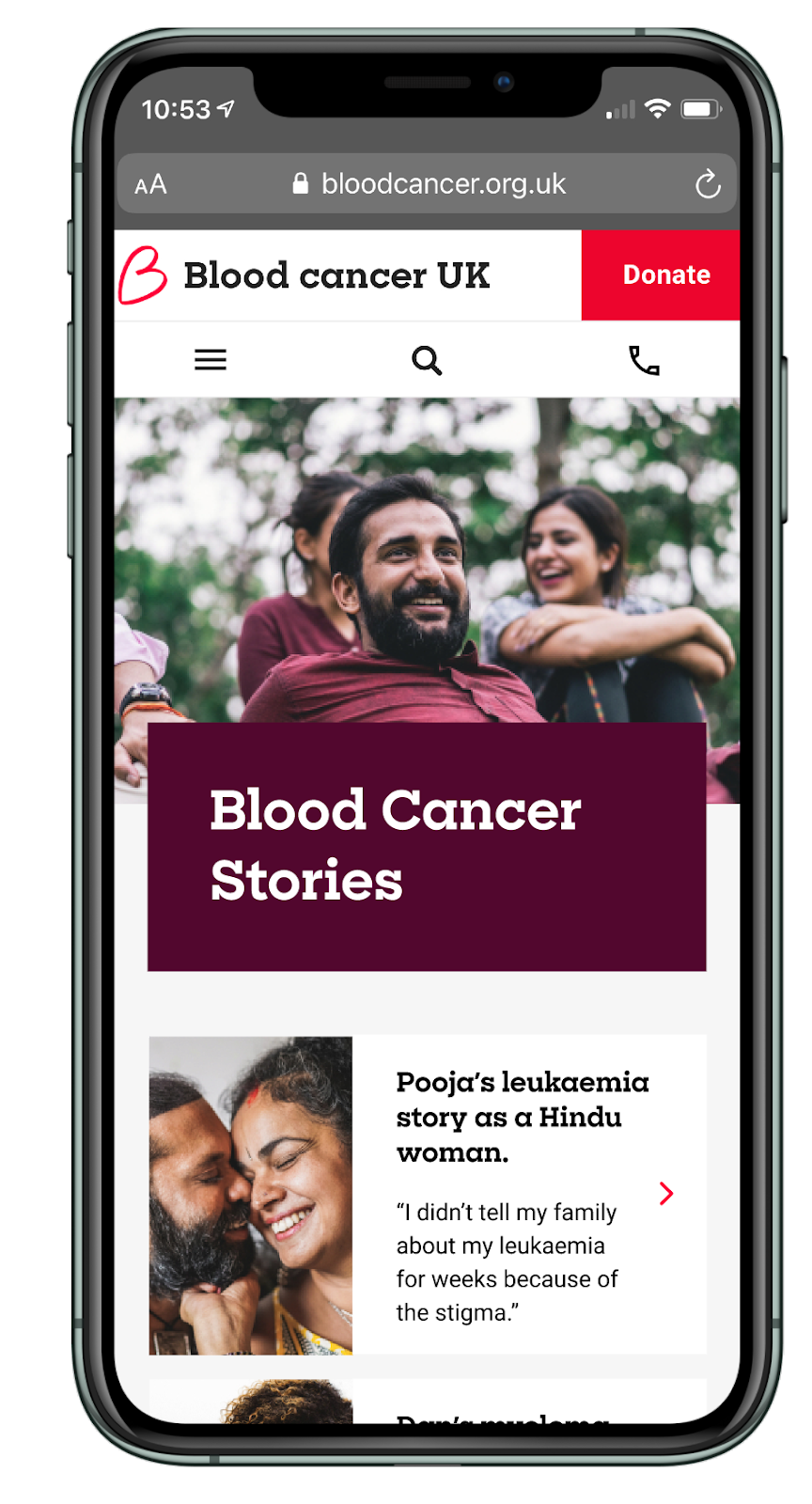About the project
We recognised from discovery work undertaken on our patient forum and support line that the pandemic had increased the already existing disparity in patient experience that marginalised patient groups were facing.
In late 2020 we successfully pitched for National Lottery funding to explore that disparity in greater depth and understand how we could bridge the gap.
Understanding the problem with user research
Our primary research tool was a series of insight interviews with a diverse group of patients and health care professionals. I also explored explored the responses to Blood Cancer UK's Covid-19 patient survey, which had over 6,000 responses, to understand themes and barriers to equity.
What did we learn?
The key insights we learned were:
Peer support was far less common amongst non-white patients and many didn't feel comfortable telling their families about their diagnosis, due to stigmatisation.
“I would have done anything to see a face who looked like me.”
"When my relatives came round, I had to hide upstairs because my parents wouldn't tell them I was ill and I had no hair."
People who were financially insecure had to chose between their health and their job
“I feel like employers are not supporting their staff. They're refusing to pay me at the moment for trying to protect my family.”
Black patients often struggle to get information that is relevant to them
“My Mum’s needs were unique [because of her skin colour] and there’s no guidance out there in relation to blood cancer and Covid-19 explicitly about those needs”
What did we do?
The consistent piece of insight we heard time and again was that marginalised blood cancer patients couldn’t access peer support or even see people who were like them talking about their experience of blood cancer.
We began to explore a peer support solution to test with these groups, to understand the impact our solution could have.
We worked with a group of non-white patients to co-produce a peer support solution prototype to test via one hour moderated usability studies.

Our initial solution storyboard

Our high fidelity prototype, built using Figma
What was the outcome?
The solution was hugely welcome 'I LOVE seeing all the non-white faces, there's nothing at all like this out there'.
We took on board all the feedback we received and adapted and amended the prototype, before retesting. We're in the process of making fundamental changes to the stories section of our website and have already made very significant changes to those pages. We now showcase a far more diverse range of voices and cover stigmatised topics.
Here's what the current website looks like.



